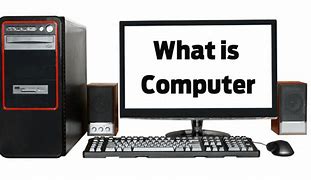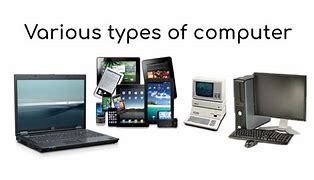1.What is a Computer ?
A computer is an electronic device that processes data and performs tasks according to a set of instructions called programs. It can handle complex calculations, store information, and communicate with other devices.
2.Main Components of a Computer
- Hardware: The physical parts of a computer, such as the monitor, keyboard, mouse, and internal components like the processor and memory.
- Software: The programs and applications that run on a computer, such as word processors, games, and operating systems.
3.Essential Hardware Components
- Central Processing Unit (CPU): Often referred to as the "brain" of the computer, it processes instructions from software and hardware.
- Memory (RAM): Temporary storage that helps the CPU process tasks. More RAM allows the computer to handle more tasks simultaneously.
- Storage (Hard Drive or SSD): This is where data is permanently stored, such as files, applications, and the operating system.
- Motherboard: The main circuit board that connects all the components together.
- Input Devices: Tools used to input data into a computer, like a keyboard, mouse, or microphone.
- Output Devices: Devices that display or output data from the computer, such as a monitor, printer, or speakers.
4. Operating System (OS)
The operating system is software that manages the computer's hardware and provides a user interface. Popular operating systems include:
- Windows
- macOS
- Linux
- Android/iOS (for mobile devices)
5.Software and Applications
- System Software: This includes the operating system and any utility programs that help manage the computer.
- Application Software: These are programs designed to perform specific tasks like word processing (Microsoft Word), browsing the web (Google Chrome), or editing photos (Adobe Photoshop).
6.Types of Computers
- Personal Computers (PC): Laptops or desktops for general use.
- Servers: Powerful computers that provide services to other computers on a network.
- Supercomputers: Extremely fast and powerful machines used for complex tasks like scientific simulations.
- Embedded Systems: Computers that are part of other devices (e.g., smartphones, cars, or appliances).
7.Basic Computer Operations
- Input: Data is entered into the computer via input devices.
- Processing: The CPU processes the input data using software.
- Output: The processed data is displayed or output through devices like monitors or speakers.
- Storage: The computer can store the data for later use.
8.Computer Networks
Computers can connect to each other through networks. The internet is the largest network in the world.
- Local Area Network (LAN): A network that connects computers in a small area like a home or office.
- Wide Area Network (WAN): A network that covers a larger geographic area, such as a city, country, or even the world.
9.Basic Security
- Antivirus Software: Protects your computer from malicious software (malware).
- Firewalls: Block unauthorized access to your computer or network.
- Passwords: Help secure your accounts and data.
10. Important Terminology
- Binary Code: The language of computers, consisting of 0s and 1s.
- Algorithm: A step-by-step procedure for solving a problem or performing a task.
- Cloud Computing: Using the internet to store and access data rather than relying on your computer’s local storage.
Let me know if you'd like to dive deeper into any of these topics!










1 Comments
Ramana sir please help me to pass ds sir
ReplyDeleteI need answers to the ds imp qsns for 2nd sem